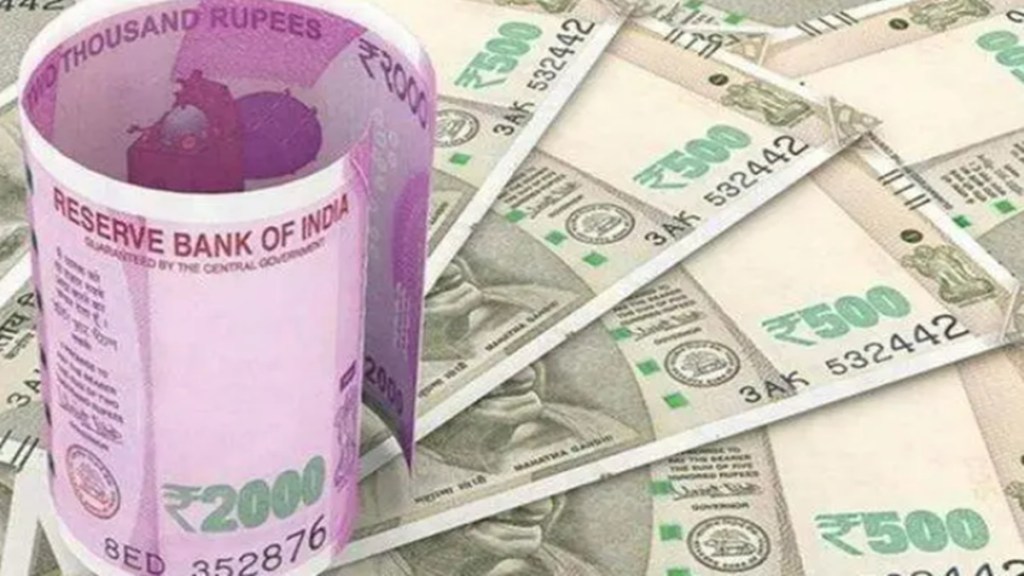Lower-than-expected growth of 13.5% in the April-June period and the possibility of a slowdown in the coming quarters have prompted analysts, who had expected the economy to perform better in the first quarter, to either cut their forecasts for the full year or reassess them.
On Thursday, Moody’s, Goldman Sachs, Morgan Stanley and SBI Research revised down their FY23 growth projections for India. Chief economists at Crisil, Icra and Bank of Baroda have maintained their FY23 growth forecasts for now but some of them cited greater downside risks now. India Ratings chief economist DK Pant said he will have a “relook” at his full-year growth forecast soon, based on the Q1 number and the progress of monsoon.
The economists that FE spoke to flagged risks to the Indian economy from a sharp deceleration in global growth, higher drag from net exports, rising interest rates, uneven monsoon spread and elevated inflation, especially in imported products due to a weak rupee.
Also read: India unemployment in August highest in 12 months, rises to 8.28%: CMIE
Analysts, therefore, expected sequential deceleration in growth momentum. As such, the latest sequential slowdown in growth — GDP in the June quarter vis-à-vis that in the March quarter — is much higher than the pre-pandemic level, without adjusting for seasonal factors (see chart). Of course, the seasonal factors can be strong and the economy is going through a turbulent phase, thanks to external headwinds that are far greater in magnitude now than in normal times.
Moody’s slashed its 2022 growth forecast for India to 7.7% from 8.8% projected in May. Goldman Sachs lowered its projections for FY23 by 20 basis points to 7%, while Morgan Stanley said there is a downside risk of 40 basis points to its growth estimate of 7.2% for FY23. SBI chief economic advisor Soumya Kanti Ghosh revised down the full-year growth forecast to as low as 6.8% from 7.5%, citing “the way below GDP numbers for the first quarter”.
However, some other analysts who had already projected real growth to be at the lower end of the 7-7.5% range have decided to retain their forecasts, for now, but with greater downside risks.
Nevertheless, any faster moderation of global commodity prices, especially of energy, as a consequence of rate tightening, likely easing of supply-side bottlenecks and slowdown in demand from Covid-hit China, and persistent pick-up in India’s contact-intensive sectors will improve the outlook for the domestic economy, some of them said. Much, therefore, depends on how the economic activities turn out in the second quarter.
Also read: GST collection rises 28% to Rs 1.43 lakh cr, festive season to drive mop-up
Yes Bank chief economist Indranil Pan pegged the full-year growth at just 6.9%. The GDP, he said, could continue to have two drag effects — private final consumption expenditure (PFCE) and net trade. The PFCE was down -2.4% quarter-on-quarter in Q1 and even though its share in overall GDP has increased and the growth from a year before stood at 26%, “it does not appear to us that there is a huge momentum here”, Pan said. Further, with inflation and rate increases, there is a likelihood that private consumption demand will have limitations to rise, despite expectations of a relatively good festive season.
Similarly, net trade is likely to be a drag as the global slowdown erodes the strength of exports while imports remain firm due to inflated oil purchase bill, Pan said. The government has also banned exports of wheat and wheat products and put curbs on the despatches of iron ore and certain steel products.
Icra chief economist Aditi Nayar retained her FY23 growth projection from the economy at 7.2%. “The robust recovery in the demand for contact-intensive services, supported by pent-up demand, increased consumer confidence levels and wider vaccination coverage, and the easing in commodity prices are expected to support growth during the rest of the year even as the uneven monsoon weighs upon agri GVA growth and rural demand,” she said.
Crisil chief economist DK Joshi maintained his FY23 growth projection for the country at 7.3%. “We maintain our call of 7.3% real GDP growth projection but with downside risks, particularly because of slowdown in global growth which would hurt our exports,” Joshi said, while listing out a raft of external headwinds.
At the same time, recent RBI surveys indicate improving consumer sentiments which bode well for consumption demand and the first quarter GDP print does corroborate that, Joshi said. “Rise in capacity utilisation rates in the manufacturing sector is favourable for private capex in pockets. This is especially true in case of infrastructure-linked sectors such as steel and cement and some Production Linked Incentive scheme-linked sectors,” he said.
Bank of Baroda chief economist Madan Sabnavis, too, retained the growth projection at 7.2% and said there is no reason for a downward revision as of now. But “there will be a downward bias especially if agriculture turns out to be an under-performer”.
According to economists at Nomura, GDP growth is expected to slow down sequentially hereon, “owing to spillovers from weakening global growth momentum, fading of pent-up demand and withdrawal of policy accommodation”. “Overall, we retain our GDP growth projections for 2022 at 7.2% y-o-y, 2023 at 4.7%, FY23 at 7.0%, but have lowered FY24 to 5.2% (from 5.5%),” they said in a report.


